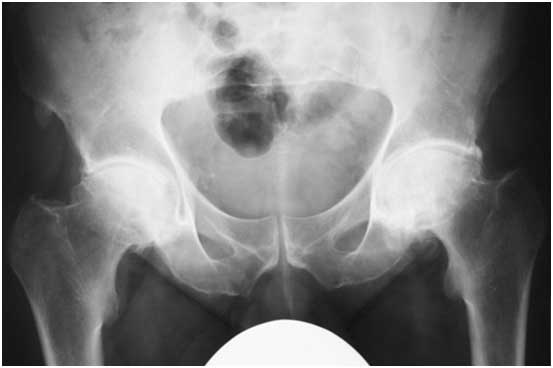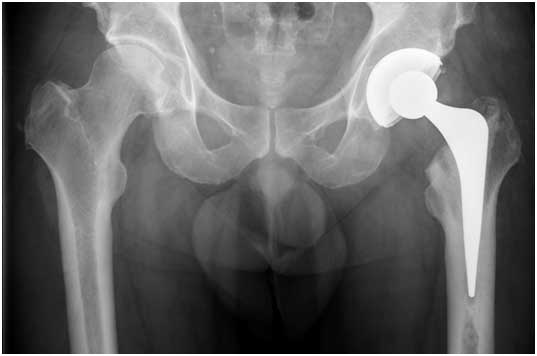Hip arthritis is a degenerative disease that occurs due to damage of the articular cartilage of the hip. Although often referred to as “wear and tear” arthritis, there are a number of changes that occur at the cellular level leading to alterations in the water content and molecules responsible for the normal structure and function of cartilage.
A number of risk factors are known to predispose to osteoarthritis occurring, and these include female gender, genetic abnormalities, trauma to the joint, developmental abnormalities of the hip joint, the ageing process, and a history of increased strain on the joint due to sporting or professional activities. In addition to the cartilage damage, the synovial lining of the joint becomes thickened and inflamed, whilst the bone around the joint also undergoes changes such as cyst formation and becoming sclerotic.
The result of the arthritic process is pain generated from the joint that is usually experienced in the groin or buttock and commonly radiates down the thigh to the knee. Indeed, some patients report only knee pain and are surprised that the problem relates to a damaged hip joint.
DIAGNOSIS OF HIP ARTHRITIS
Hip arthritis is usually diagnosed through a consultation during which you will be examined and have an x-ray performed. This is usually sufficient to diagnose and be able to advise you regarding the treatment of your hip pain. Occasionally further tests may be organised such as an MRI scan of your hips or back or alternatively a ultrasound/X-ray guided injection to the hip joint. Once a diagnosis is made, your surgeon will be able to advise you of the treatments for which you are suitable.
TREATMENT OF HIP ARTHRITIS
NON-OPERATIVE TREATMENTS
The treatment of hip arthritis includes both non-operative and operative management strategies. This usually starts with simple measures such as starting anti-inflammatory drugs, pain medications, use of a walking stick, physiotherapy and weight loss. These simple measures can help with early arthritis, particularly when you need to get on with living your life without feeling hip pain.
In some circumstances your surgeon may recommend a steroid injection to the hip performed either under ultrasound or x-ray guidance. This is useful in two respects – it can provide up to 6 months relief of symptoms in early arthritis, but where there may be overlapping pathology (such as pain coming from your spine) it can help establish how much of the pain is coming from the hip.
OPERATIVE TREATMENTS
After a trial of non-operative treatments, patients whom continue to have significant symptoms related to the hip joint often proceed to surgery. The most commonly performed surgical procedure for hip arthritis is Total Hip Replacement (THR) with over 80,000 hip replacements performed in the UK every year. Hip replacement surgery is a fantastic procedure which relieves pain and stiffness and restores quality of life to thousands of patients every year. Over the years hip replacement surgery has evolved into a very safe procedure with reliable and reproducible results. Follow the hyperlink for further information regarding the process of Total Hip Replacement.
In a few very select cases alternative surgical treatments may be considered and these are usually where early damage may be treatable with either key-hole surgery (hip arthroscopy), or by braking the bones of the pelvis and resetting them to improve the position of the joint (peri-acetabular osteotomy). Typically joint damage of this sort occurs during childhood and patients present in young adulthood (< 30).
PATIENT X-RAYS

Patient presenting hip arthritis

Arthritis treated with total hip replacement









